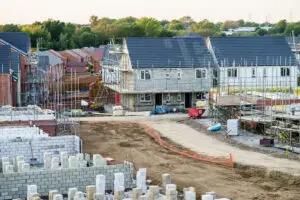April 2024
This week draws attention to the risks and hazards of asbestos with Global Asbestos Awareness Week. When asbestos was banned in 1999, it didn’t disappear. It is the greatest cause of work-related deaths in Great Britain and continues to be a significant danger in older buildings when they’re damaged or disturbed.
Asbestos & You
Raising the profile of asbestos encourages dutyholders to take culpable responsibility for a building’s maintenance, increasing the lives potentially saved from related ill-health.
Anyone who has worked with asbestos is at risk of developing lung cancer, mesothelioma, asbestosis, and pleural thickening, amongst other related conditions. The risk presented by asbestos still kills about 5000 workers each year. Ensuring your staff are protected is vital.
Types of work which are likely to disturb asbestos include:
- Drilling
- Building refurbishment
- Demolition
- Installation
Asbestos isn’t something you can see, unlike dust. It’s invisible and can rest on clothing. Familiarise yourself better – explore the ‘Asbestos & You’ campaign on our page with the button below or through HSE.
Asbestos – Your Duty
If you are a dutyholder, you are responsible for the protection of people who work or use a building against asbestos exposure. You may be a dutyholder if you are:
- A building owner
- A landlord of a premises
- An organisation or individual responsible for a building’s maintenance or repair
Managing asbestos isn’t straight forward. The condition of the asbestos-containing materials is important in knowing what actions to take next. HSE provide a number of resources and guides to support dutyholders to make responsible decisions with their campaign, ‘Asbestos – Your Duty’. To learn more about the legal duty around management and removal of asbestos, click the link below or visit the HSE website.
